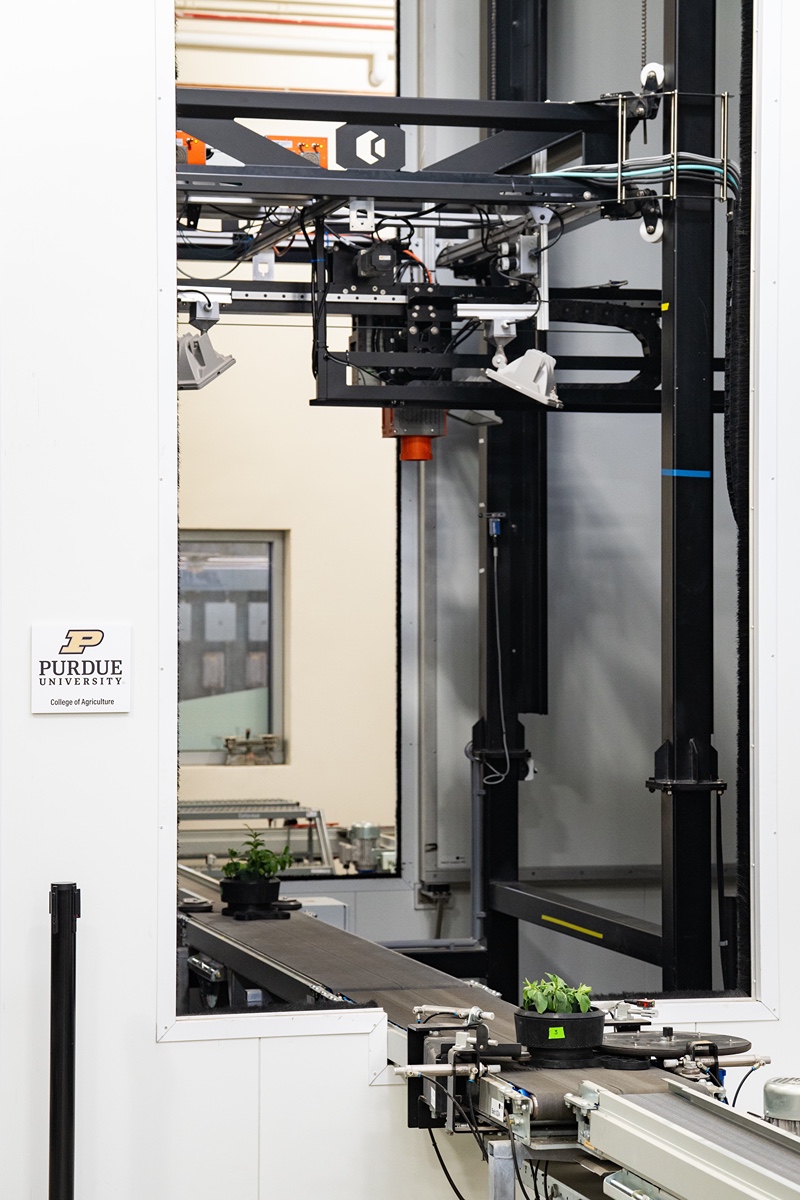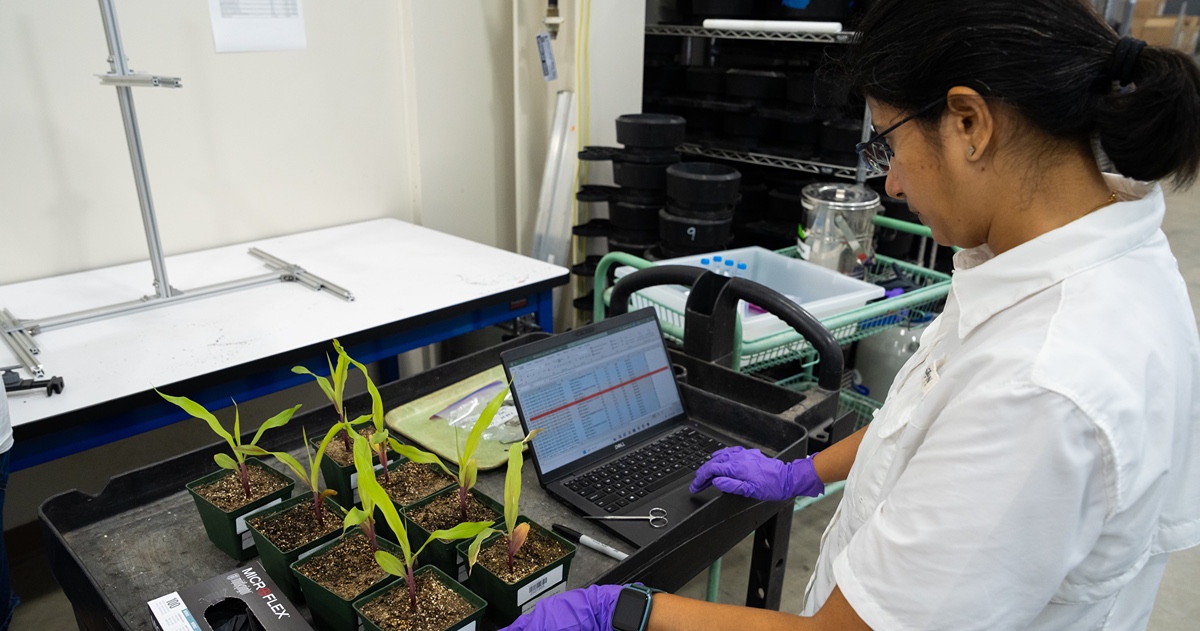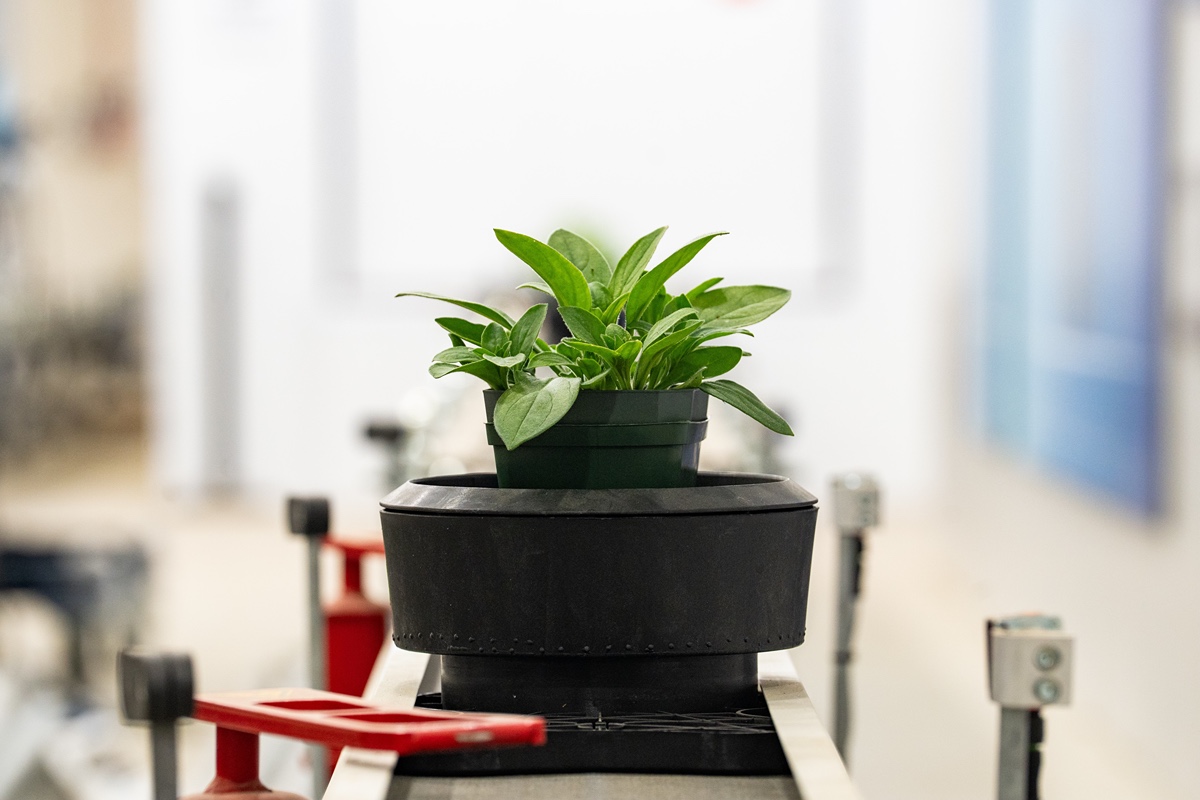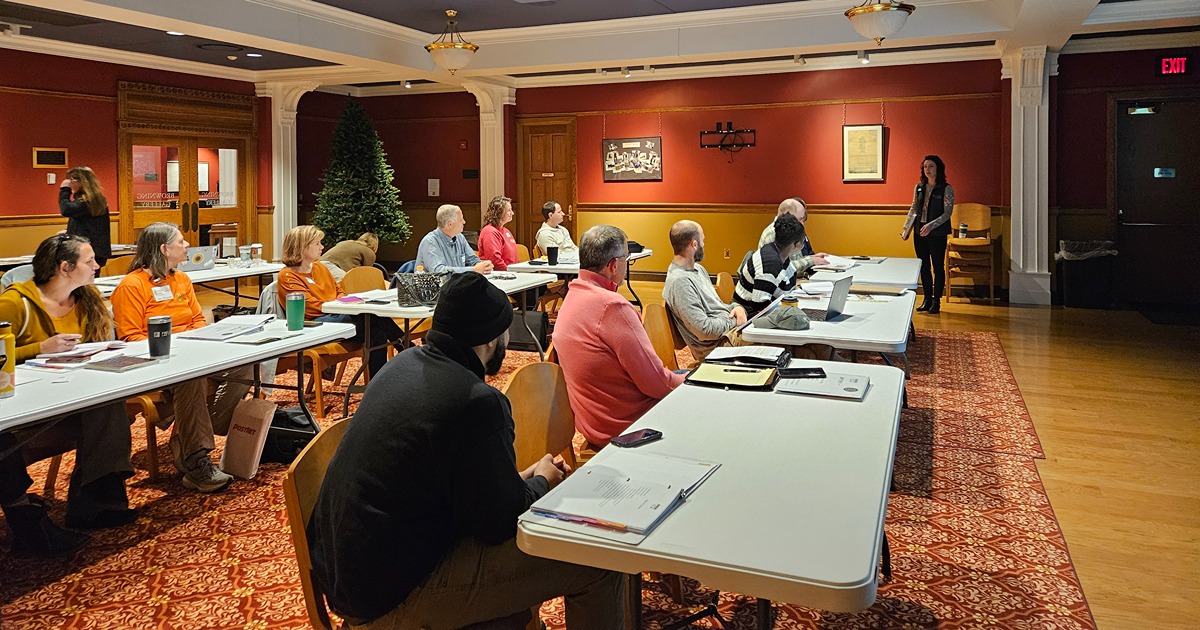Purdue-DARPA project explores plants as sentinels for chemical activity
WEST LAFAYETTE, Ind. — Purdue University’s College of Agriculture has joined an effort to mobilize plants as chemical intelligence gatherers.
Collaborating with STR, an advanced technology development company, the Purdue team will test whether plants exhibit observable responses to synthetic chemical exposures. This would include whether a corn plant exposed to a precursor of a chemical of interest responds the same way as it would to a pesticide.
The effort is supported by a Defense Advanced Research Projects Agency (DARPA) program called eX Virentia, Latin for “from the greenery.” STR and Purdue are one of four teams nationally to receive DARPA funding for pursuing preliminary work on the project. The unclassified project focuses on plants already found in nature or agriculture; the work involves no genetically modified organisms or hazardous chemicals.
“Everything we’re learning is going to be widely available and made public,” said Joshua Widhalm, associate professor of horticulture and director of the Center for Plant Biology. The work focuses on understanding how plants respond to synthetic chemical exposures and whether those responses are observable and can be distinguished from other chemicals and environmental stresses.
If successful, the current work would lay the groundwork for further studies to test what factors might complicate observing how plants respond to multiple target chemicals for a period of several hours to weeks.
“How do drought, pathogen stress and other environmental factors affect the way that plants might give off cues that they’re exposed to a certain chemical?” Widhalm asked.
STR specializes in sensors, signal processing, modeling, simulation, analytics, artificial intelligence, machine learning and cyber issues. The company brings the needed data analytics capability to the project, and enlisted Purdue as a partner to provide complementary expertise and research infrastructure, including experts in a range of specialties and greenhouse and phenotyping facilities that offer fast, nondestructive assessment of plant traits under precise environmental control.
STR’s search for an expert who understands how herbicides affect plants led to weed scientist Bryan Young, professor of botany and plant pathology. Young assesses the responses herbicides elicit in plants and identifies candidate chemistries for developing novel herbicides. He is applying similar methods to assess plant injury after chemical exposure.
Along with Young and Widhalm, the Purdue team includes Jian Jin, associate professor of agricultural and biological engineering, and Amanda Pendleton, research data analyst in the College of Agriculture Research Services.
Major components of the project involve Jin’s LeafSpec technology and Purdue’s Ag Alumni Seed Phenotyping Facility. Jin is the president and CEO of LeafSpec LLC, which holds an exclusive license from the Purdue Research Foundation Office of Technology Commercialization to market the company’s handheld leaf imaging technologies. Jin, who helped set up the phenotyping facility, will link imaging results to the plants’ chemical responses.
Pendleton co-authored a study published in 2020 funded by the DARPA Advanced Plant Technologies program. The study reported the sequenced genome of green foxtail, a grass species important for testing improved cereal crops. Pendleton will analyze the genetic data collected to determine what groups of genes change together following chemical exposure. She will also identify how genetic changes correlate with changes in metabolites — substances produced during metabolism.
Widhalm will oversee the biochemical data collection and analysis needed to explain any chemically triggered observable features in the plants. This ties into the plant metabolism and biochemistry research already underway in Widhalm’s lab.
Kirsty McFarland, a principal scientist in STR’s applied biotechnologies division, specializes in biology and biological data. Her interests include squeezing as much information as possible from high-throughput systems that collect large masses of data. She worries that often in biology, too much data go to waste.
 STR, however, has developed technologies for other purposes that could help biologists learn more from their data. “We have a technology that we’re moving into biology. That’s an opportunity that we’re excited to work on, particularly in this program,” McFarland said.
STR, however, has developed technologies for other purposes that could help biologists learn more from their data. “We have a technology that we’re moving into biology. That’s an opportunity that we’re excited to work on, particularly in this program,” McFarland said.
Purdue began gathering preliminary data in June and July. “We’re working with a mix of agronomic and horticultural species, then using a variety of imaging technologies available at the Ag Alumni Seed Phenotyping Facility to monitor how plants respond to the chemical that we’re looking at and taking those data,” Widhalm said.
Once the plants come out of the imaging system, the researchers can sample the plants, look for genetic and metabolite changes, then try to use those biochemical data to explain observable features in the plant.
If the STR-Purdue eX Virentia project proves successful, McFarland said, “it has potential for other applications across biology, but particularly for plants.”
About Purdue Agriculture
Purdue University’s College of Agriculture is one of the world’s leading colleges of agricultural, food, life and natural resource sciences. The college is committed to preparing students to make a difference in whatever careers they pursue; stretching the frontiers of science to discover solutions to some of our most pressing global, regional and local challenges; and, through Purdue Extension and other engagement programs, educating the people of Indiana, the nation and the world to improve their lives and livelihoods. To learn more about Purdue Agriculture, visit this site.
About Purdue University
Purdue University is a public research university leading with excellence at scale. Ranked among top 10 public universities in the United States, Purdue discovers, disseminates and deploys knowledge with a quality and at a scale second to none. More than 106,000 students study at Purdue across multiple campuses, locations and modalities, including more than 57,000 at our main campus locations in West Lafayette and Indianapolis. Committed to affordability and accessibility, Purdue’s main campus has frozen tuition 14 years in a row. See how Purdue never stops in the persistent pursuit of the next giant leap — including its integrated, comprehensive Indianapolis urban expansion; the Mitch Daniels School of Business; Purdue Computes; and the One Health initiative — at https://www.purdue.edu/president/strategic-initiatives.
Writer: Steve Koppes
Media contact: Devyn Ashlea Raver, draver@purdue.edu
Sources: Joshua Widhalm, jwidhalm@purdue.edu; Kirsty McFarland, Kirsty.mcfarland@str.us
Agricultural Communications: Maureen Manier, mmanier@purdue.edu, 765-494-8415
Journalist Assets: Publication quality charts and images image can be obtained at this, link





